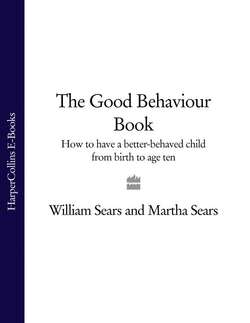Читать книгу The Good Behaviour Book: How to have a better-behaved child from birth to age ten - Martha Sears - Страница 71
creative alternatives to “no”
ОглавлениеOne morning when she was eighteen months old our daughter Lauren, who was going through an impulsive phase, was flitting around the house climbing on and getting into everything. She was endangering herself and trashing the house. After the twentieth “No”, I was tired of hearing that word and so was Lauren. On the wall in one of our children’s bedrooms I noticed a poster of a kitten stuck out on a limb at the top of a tree. The caption read, “Lord, protect me from myself.” I realized that Lauren needed rescuing from her impulsive self. She needed a change of environment. We spent the rest of the day outside. Parks and playgrounds provide space and a “yes” environment in which to roam and climb. If you find yourself isolated with a curious toddler who is flitting from thing to thing, and you’re chasing him around the house saying no, consider changing to something more fun. Go outside; take along a good book and plant yourself in a safe location to let him run.
The fewer “Nos”, the better your day goes.
Teach stop signs. Even in the early months, teach your baby to recognize body language that means stop. Your baby needs to be exposed to “stop” body language long before hearing the no word. The first nip on Mother’s nipple during breastfeeding will invoke an “ouch” sign on your face; the first time your baby reaches for something dangerous, your face will register alarm. You are likely to get best results from your stop signs if your baby has been so used to positive body language that any change makes him sit up and take notice. Your “nos” will be more meaningful during toddlerhood if your baby sees a lot of “yes” body language: looks of pride and approval, gestures of delight and pleasure, eye-to-eye contact, hugs, tickles, and a sparkly face that says “I love you. You’re great!”
We have noticed that attachment-parented children, because they spend hours a day in their parents’ arms and in face-to-face contact, easily learn to read parents’ faces and body language. Having lots of face-to-face contact in the early months makes face-to-face communication easier in the months and years to come. Some children are so impressed by body language that you can get your point across without saying a word. An expressive mother of a connected two-year-old told us: “Usually all I have to do is glance at her with a slight frown on my face, and she stops misbehaving.”
Teach stop sounds. Often a change in your mood or body language is not enough to redirect impulsive actions. Words are needed. Children soon learn which discipline words carry more power and demand quicker response than others. And children soon learn which tone of voice means business and which allows for some latitude. Arm yourself with a variety of “stop-what-you’re-doing” sounds so that you can choose one that fits the occasion. Tailor the intensity of the sound to the gravity of the behaviour. Save the really big sound for the true danger.
Create alternatives to the n-word. Constantly saying no causes this word to lose its power. Since stop sounds are used mainly to protect, try using more specific words that fit the situation. Consider this example: when a toddler is about to reach into the cat’s litter tray your first reaction is to say “No!” but you follow it up with an explanation, “Dirty! Make you sick.” Next time the child goes for the litter tray (and he will do it again), instead of no, say, “Dirty! Make you sick.” That and a disgusted expression on your face will help the child learn the why as well as the what of good behaviour, and the litter box will lose its attraction. (We are assuming here that the litter tray is kept in a location well away from the toddler’s beaten path. Cat litter, like sand, is irresistible to babies.) Babies start reaching for “no-nos” around six months. A good phrase to use early on is “Not for Josie”. By the time baby is a toddler this phrase will be familiar and matter-of-fact.
